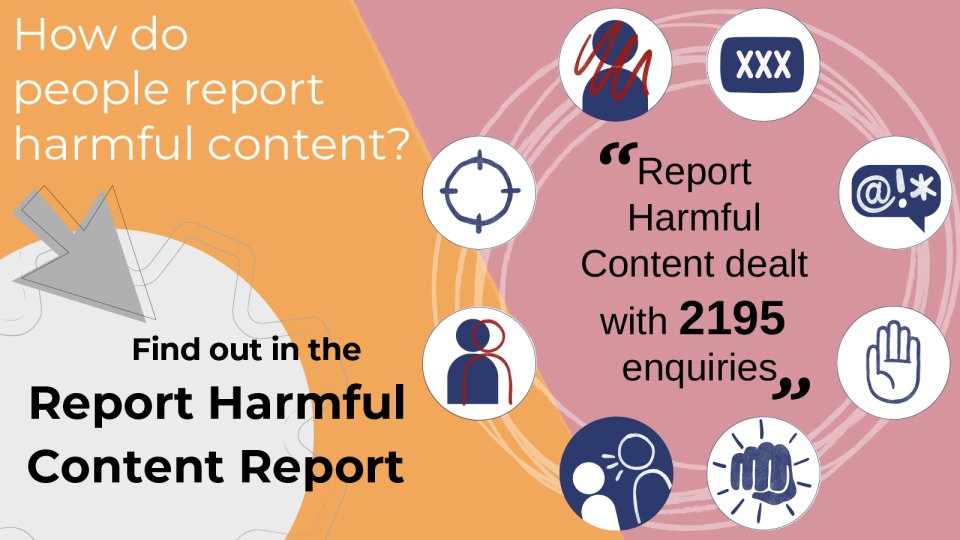Report Harmful Content have launched their latest research report looking at cases and trends that have been seen throughout 2021 and 2022 regarding ‘legal but harmful’ online content. Report Harmful Content is a service that is hosted by SWGfL and the UK Safer Internet Centre. The online reporting platform allows anyone over 13 to get advice around reporting legal but harmful content alongside representing those victims who have had reports not been resolved satisfactorily by industry partners.
Reports of Online Harm
The report looks at data between April 1st 2021 and November 30th 2022 with a total of 2195 reports being received within this time. As previous research has already indicated, bullying and harassment remains the most common type of reported online harm (754 cases) followed by pornography (532) and then impersonation (307).
Out of the reports that were received, 705 (32%) of these required some form of escalation and of the cases that were escalated to industry partners, 87% were successfully actioned as a result of the Report Harmful Content intervention. Other findings concluded:
- Complaints were made against a wide range of online services and were not just limited to industry leading platforms, highlighting that only signposting to reporting procedures across major online platforms is not enough.
- There is a need for an independent single point of contact service when it comes to reporting online harm as well as signposting and directing individuals to relevant solutions and support.
- There is a lack of public understanding around online harm highlighting the importance of developing knowledge through services such as Report Harmful Content to help individuals tackle concerns more proactively.
- Cases widely range from subjective opinions around content that is deemed ‘unacceptable’ to more complex reports around illegal content
- Data suggests that individuals who use the Report Harmful Content service are in most cases in need of ‘help’ and perhaps come as a result of not getting the help they anticipated from other platforms and services.
Online Safety Bill – Dismantling Current Obligations
More importantly, this research represents what the online harm landscape is currently showing. Reports to Report Harmful Content continue to increase on a yearly basis (58% more reports were made in these 18 months) with cases consistently showing that individuals are in desperate need of help when it comes to reporting legal but harmful content online. Despite this, the current online safety bill is looking to dismantle current obligations that ensure online platforms have ‘impartial dispute resolution’ processes in place to protect individuals against these very problems. Report Harmful Content provides this level of service, ensuring that an independent service can support those who are in need of assistance when they have been unable to get it elsewhere.
Kathryn Tremlett Harmful Online Content Manager at SWGfL said:
‘Without this key piece of legislation in place, we can expect an unprecedented rise in the level of online harm. Ensuring that actions are in place to effectively protect individuals when they go online has been a long process but one that has represented a positive developmental change for online safety throughout the years. Now, the Government is looking to remove it. This essential process has continued to protect individuals against a multitude of harm so it is deeply worrying to see it disregarded without consideration for what damaging implications it will ultimately bring. This giant step backwards plans considerable doubt and concern for the future whilst highlighting alarming gaps within the current Online Safety Bill. We hope the obligation for platforms in scope to provide impartial dispute resolution will be reinstated and prioritised with immediate effect. The Bill should first and foremost prioritise the safety of individuals - and currently, it does not.’
This latest report highlights the continued need for Report Harmful Content, as well as indicating the harmful content that is impacting online users. If you would like to read more about the research from Report Harmful Content, you can download the full report here.
To discover more about the service and the support it provides, please visit the Report Harmful Content website.






